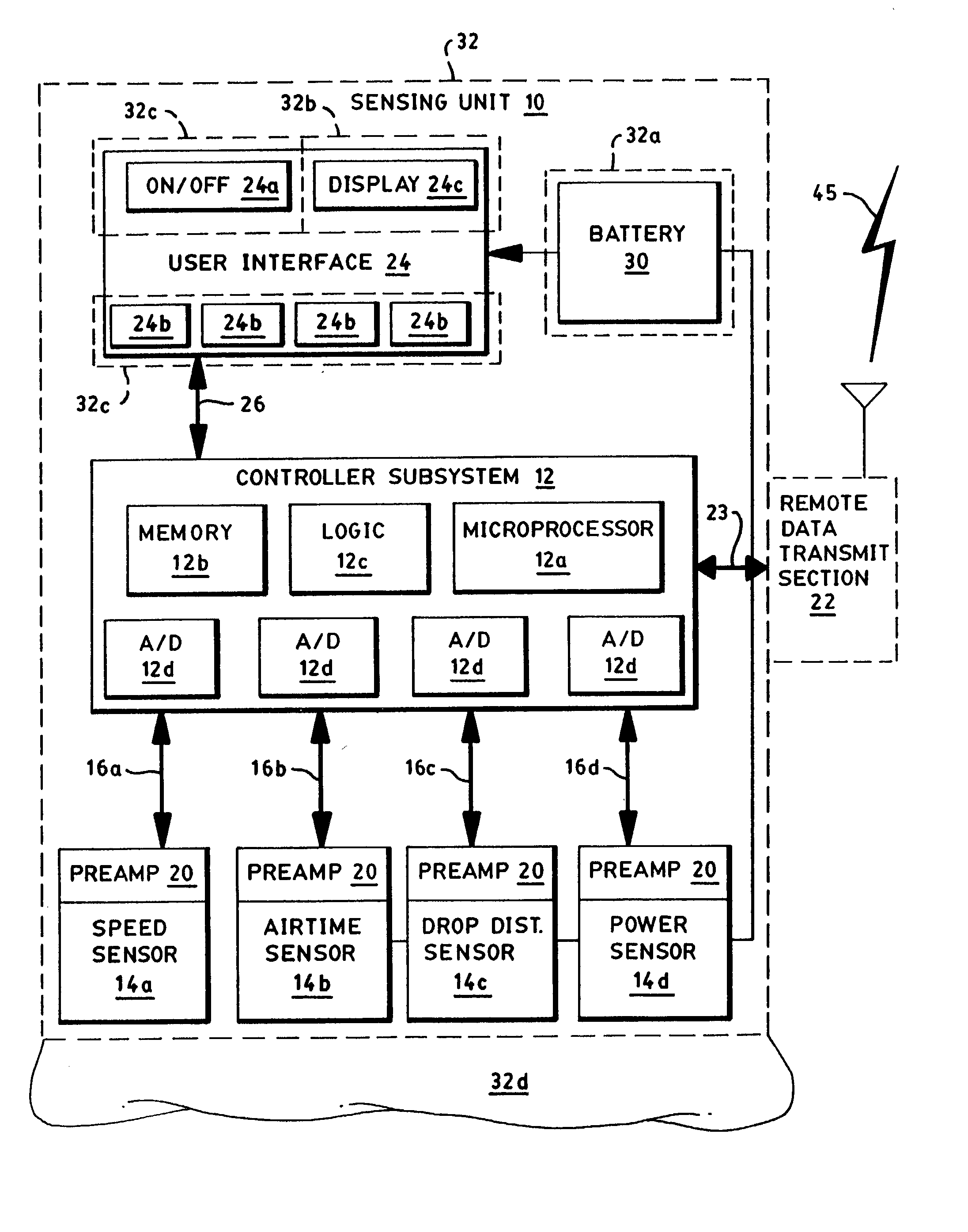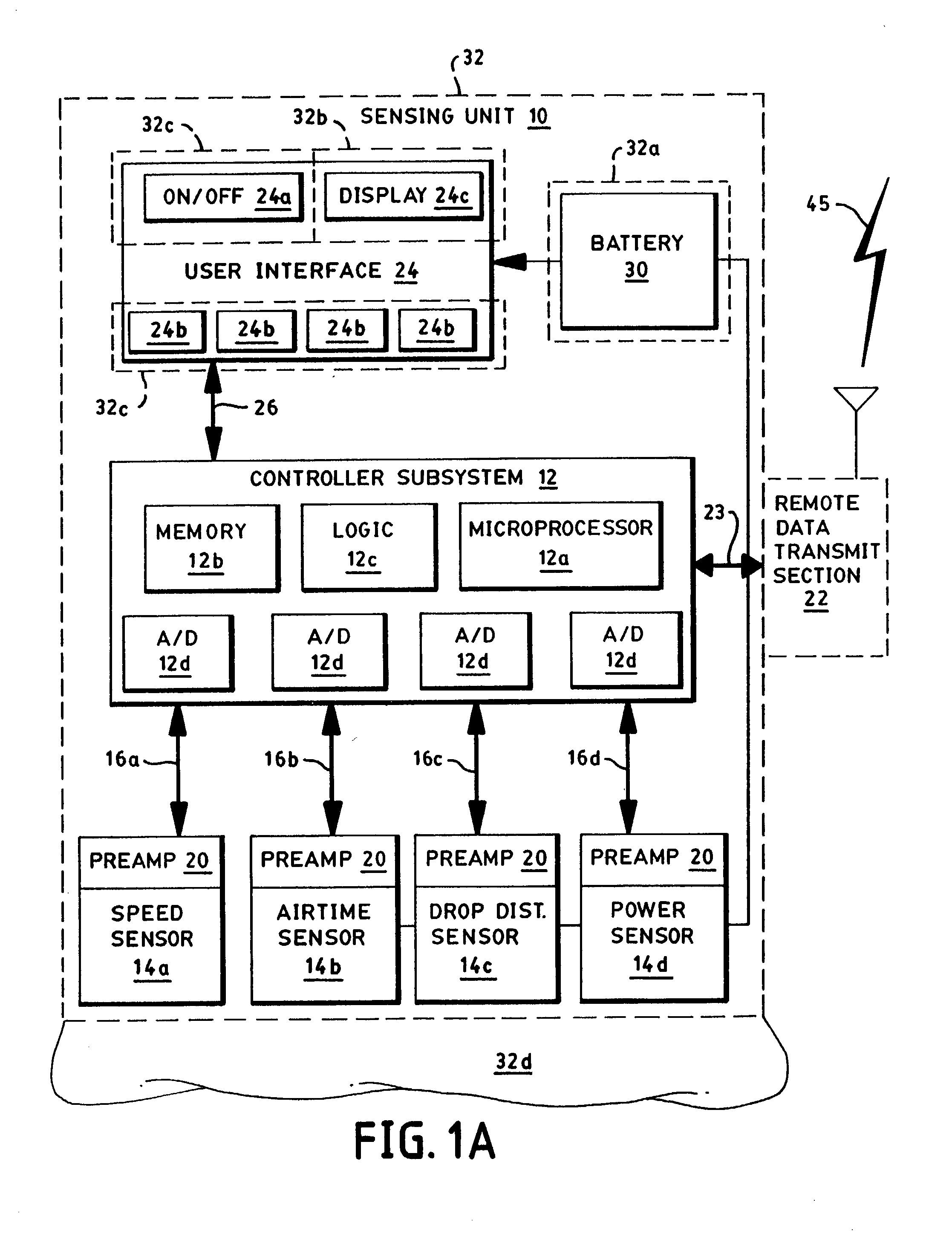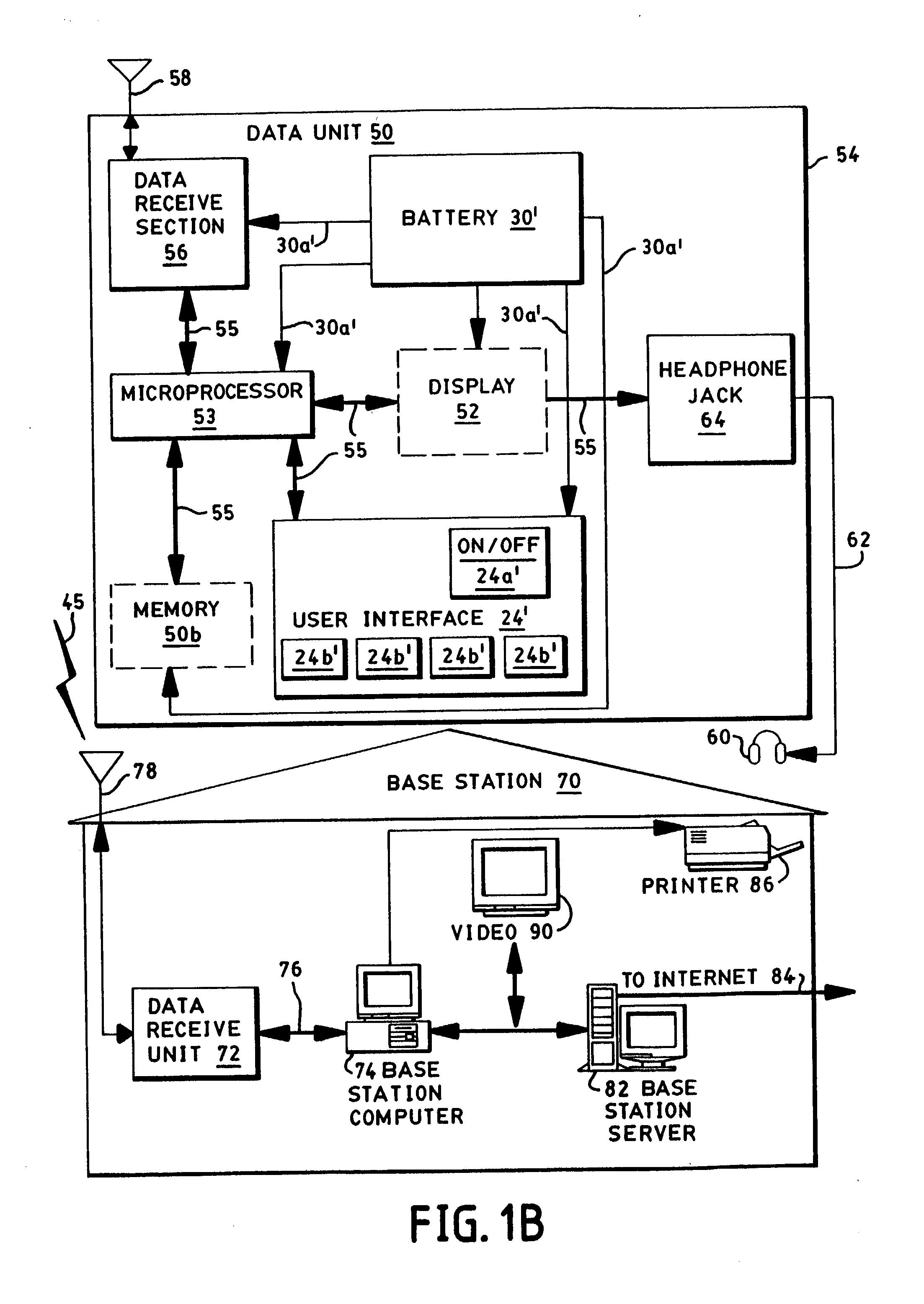Mobile speedometer system, and associated methods
a speedometer and mobile technology, applied in the field of mobile speedometer systems, can solve the problems of not being able to quantitatively compare the roughness of the journey of the user, the only qualitative effect of the activity, and the inability to quantitatively determine the speed of the user, etc., to achieve the effect of reliable determination of speed
- Summary
- Abstract
- Description
- Claims
- Application Information
AI Technical Summary
Benefits of technology
Problems solved by technology
Method used
Image
Examples
Embodiment Construction
[0176] FIG. 1A illustrates a sensing unit 10 constructed according to the invention. A controller subsystem 12 controls the unit 10 and is connected to one or more sensors 14a-14d. Typically, the subsystem 12 receives data from the sensors 14a-d through data line 16a-d; though certain sensors 14 require or permit control signals, so data lines 16a-d are preferably bi-directional. It is not necessary that the unit 10 incorporate all sensors 14a-14d and only one of the sensors 14a, 14b, 14c or 14d is required so as to provide performance data. In one preferred embodiment, however, the unit 10 includes all four sensors 14a-14d. In another preferred embodiment, only the airtime sensor 14b is included within the unit 10.
[0177] The sensors 14a-14d take a variety of forms, as discussed herein. Generally, the speed sensor 14a provides data indicative of speed to the controller subsystem 12 along data line 16a. One exemplary speed sensor 14a utilizes a microwave Doppler module such as made b...
PUM
 Login to View More
Login to View More Abstract
Description
Claims
Application Information
 Login to View More
Login to View More - R&D
- Intellectual Property
- Life Sciences
- Materials
- Tech Scout
- Unparalleled Data Quality
- Higher Quality Content
- 60% Fewer Hallucinations
Browse by: Latest US Patents, China's latest patents, Technical Efficacy Thesaurus, Application Domain, Technology Topic, Popular Technical Reports.
© 2025 PatSnap. All rights reserved.Legal|Privacy policy|Modern Slavery Act Transparency Statement|Sitemap|About US| Contact US: help@patsnap.com



